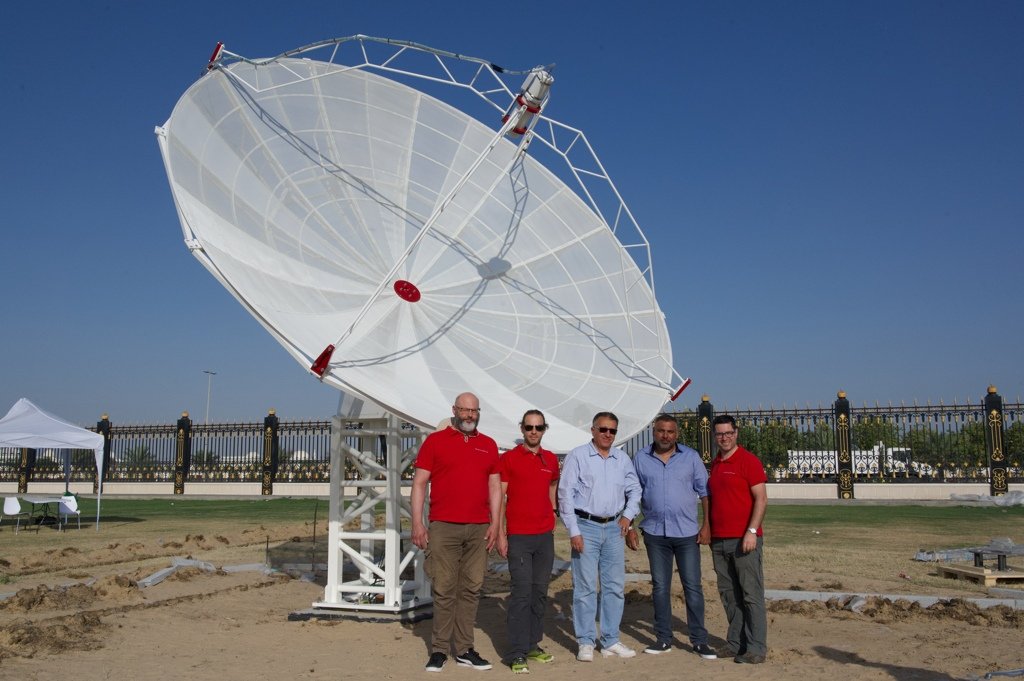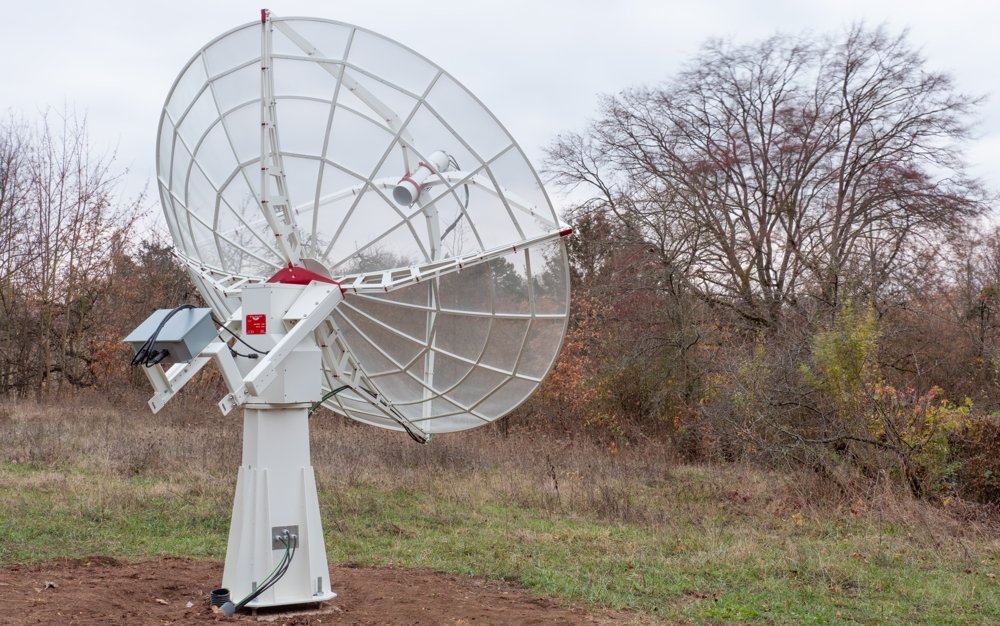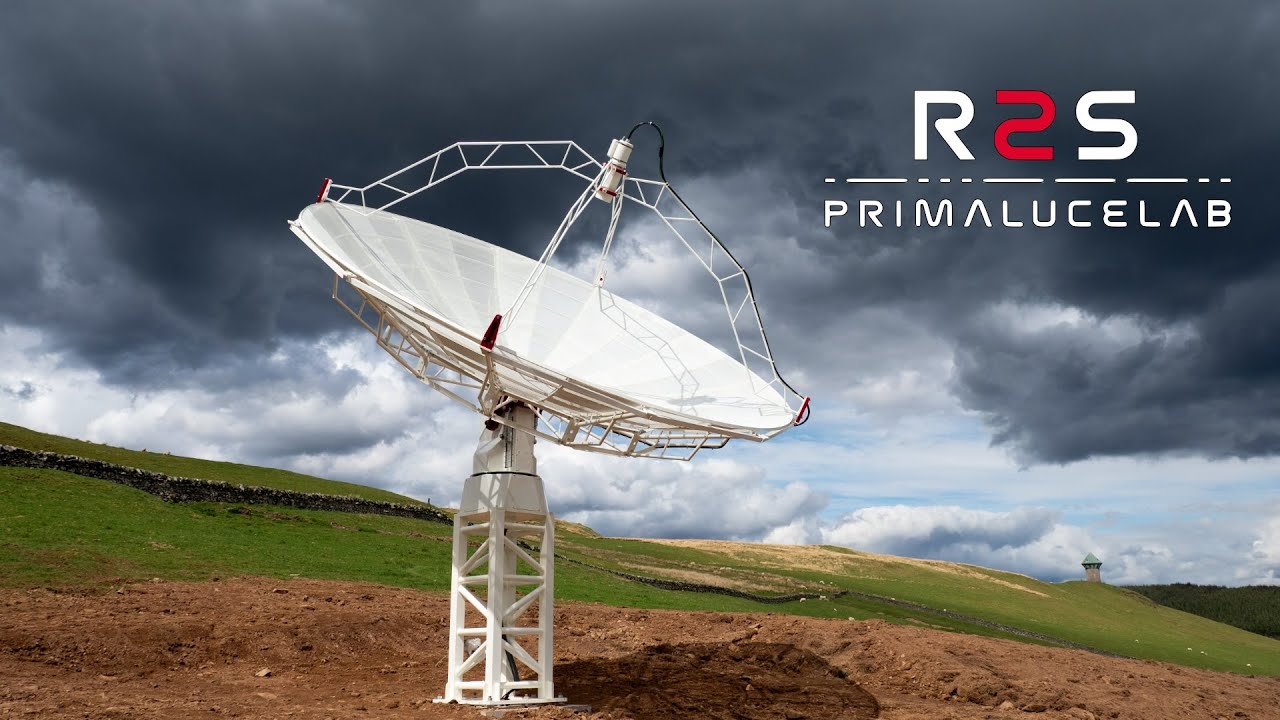SPIDER 300A Advanced Radio Telescope installed at New Mexico Tech University near the Very Large Array in the United States. The SPIDER Radio Telescope is used by beginning students in radio astronomy before moving on to larger radio telescopes. This way professors and students can focus on radio astronomy with a compact but powerful radio telescope instead of having to worry about building one.
“The equipment they’ve designed is more sturdy, durable and weather-proofed than what we had previously. It’s like going from two tin cans and a piece of string to an iPhone. Now we have a tool that mimics what we do with the Very Large Array, yet this is user-friendly for students.”
(Judy Stanley, NRAO/VLA Education Officer, from the article “Interferometer installed at Etscorn Observatory” by John Larson, El Defensor Chieftain).

ADVANTAGES of Radio2Space radio telescopes and ground station antenna systems:
When used for radio astronomy, SPIDER radio telescopes bypass the typical limitations of optical telescopes: there is no need to wait for nighttime or favorable weather conditions, and radio telescopes are not limited by light pollution. These innovative, turnkey instruments allow any person without specialized technical skills to do astronomy anytime, anywhere. Radio2Space radio telescopes allow users to record radio waves from radio sources in our Solar System, from the Milky Way, and from distant galaxies or nebulas. Users can analyze and process the data, detect spectra and generate radio maps of many objects.
INTREPID ground station antenna systems allow any science or educational institution to own and operate the most affordable scientific systems for space communication. Thanks to specially developed technologies, INTREPID ground station antenna systems can support spacecraft exploration and satellite missions in Earth orbit. These instruments are remotely operated to control antenna position and users can use it to record telemetry data transmitted to Earth via radio signals from spacecraft or perform radio science by analyzing the signals emitted by spacecraft. INTREPID ground station antenna systems use very precise antenna tracking systems that allow accurate tracking of spacecraft – combined with using high directivity antennas, background noise is reduced helping to detect faint signals from spacecraft.

CUSTOMERS:
Schools and Universities
Radio astronomy is the perfect school subject for an educational program since can be performed in day time and, with the proper instruments, also in bad weather conditions. SPIDER radio telescopes allow professors and students focus on learn how to use a radio telescope, capture and process data, instead of having to understand how to build one.
Space agencies and Satellite Services
INTREPID ground station antenna systems allow Space Agencies and Satellite Services to own and operate the most affordable scientific systems for space communication. INTREPID ground station antenna systems not only provide high quality instrument at an affordable price but also reduce operation and maintenance costs.
Science institutes
SPIDER radio telescopes are developed with the same features of a large radio telescope, this way they can be used also for research. SPIDER radio telescopes are ready for interferometry and science institutes can use more compact radio telescopes together to improve system performance, by increasing collecting area and spatial resolution.
Museums and Planetariums
In order to engage people interest in space application, museums and planetariums can use the Radio2Space radio telescopes together with the specially designed Multimedia Module. This way people, without special skills, can use the radio telescopes in real time and perform simple experiments with the radio telescopes like point a sets of radio sources of the Universe, calculate the temperature of the Sun or detect the neutral Hydrogen in the Milky Way plane.

